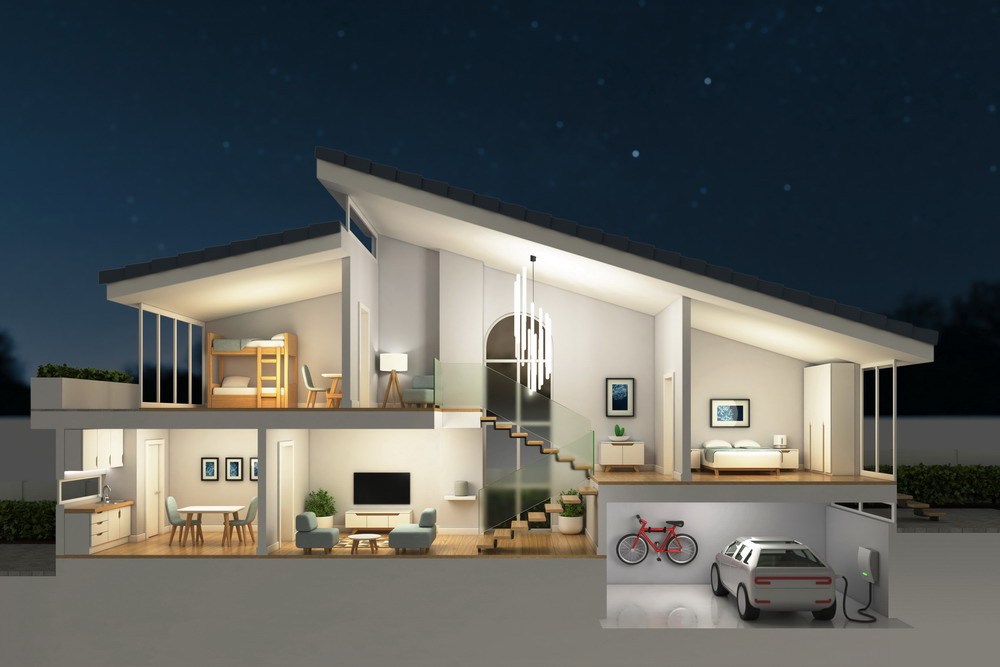I have noticed a new industry emerging as a result of advancements in smart home technology. That industry is designing smart home ecosystems on behalf of customers who want to embrace the smart home concept but do not have the tech knowledge to design an ecosystem themselves. It isa very interesting business and one that requires some insight into what makes smart homes so attractive.
It’s one thing for a homeowner to dabble in smart home tech by investing in a smart speaker or a couple of smart light fixtures with compatible bulbs. It is an entirely different matter to design a complete ecosystem that integrates multiple smart devices in a seamless environment. To do that effectively, you need to understand the four pillars of smart home design.
These four pillars are basically the four main concepts that make smart home design worthwhile. If you can nail them, you can win the smart home design game. Otherwise, you might ultimately discover that you are a mediocre designer, at best.
Pillar #1: Efficiency
The remainder of this post will be dedicated to discussing smart home design’s four pillars. We begin with efficiency, though the four pillars are not discussed in any particular order here. Efficiency is first on the list because it is easy enough to understand by talking about smart thermostats and smart lighting.
Most of us have been hearing about energy efficiency for as long as we can remember. Government officials and energy experts have been telling us since the 1970s oil crisis era just how important it is for us to conserve energy whenever possible. It’s built into the American psyche to the extent that energy efficiency is one of the things we consider when buying a new home.
Smart Thermostats and Lights
The smart thermostat is the epitome of energy efficiency in a smart home ecosystem. Not only can it be programmed so as to not waste energy, but it can also artificially learn a homeowner’s routine and self-adjust programming when necessary. With a smart thermostat, you are not heating or cooling a home when you don’t have to.
As for smart lights, they make lighting more energy efficient when they are programmed to turn on and off based on a homeowner’s routine. Just as with the thermostat, there is no point in illuminating lights when no one is around. Turning them off increases energy efficiency.
Pillar #2: Convenience
Convenience is the second pillar of smart home design. One could make the case that it is more important than the other three pillars for the simple fact that people are reticent about doing things that make life more inconvenient. For right or wrong, this is just the modern mindset. We live in a world in which convenience is a major player.
Fortunately, a well-designed smart home ecosystem makes life more convenient by changing the way people do things. Take the smart lock. A state-of-the-art smart lock from a company like Vivint Home Security offers a number of functions that make it far more convenient to use than a traditional deadbolt.
Let Guests In Remotely
For example, smart locks are remotely accessible. Let’s say your parents are coming in from Florida to spend the holidays with you. There is no need to be home when they arrive. With a smart lock, you can unlock the front door from work using your phone. Your parents only need to send you a quick message to let you know they have arrived.
Likewise, you don’t have to give them a key during their stay. Instead, give them a 4-digit access code. They can come and go as they please without you having to worry about an extra set of keys floating around.
Pillar #3: Security
Home security used to be a completely separate entity. It’s not anymore. Vivint and other smart home tech companies are combining security and automation in fully integrated packages ideally suited for the modern smart home ecosystem. That same smart lock that allows you to unlock the door with your phone can also be programmed to automatically lock as you leave the house.
Combine the smart lock with a video doorbell and you have a more secure entry way. Meanwhile, smart lighting can be programmed to turn on and off throughout the day, thereby giving the impression that someone is home. An unsure burglar is more likely to think twice about entering a home he believes might be occupied.
In the modern smart home ecosystem, video cameras are important players. Parents install video cameras to keep an eye on the kids. Pet owners do the same thing for their animals. But the same cameras that keep an eye on kids and pets also act as deterrents to crime. Burglars and home invaders do not like video cameras.
Pillar #4: Enjoyment
The fourth and final pillar of smart home design is enjoyment. Although it might sound superficial, ensuring that people get more enjoyment out of their homes is an important selling point for smart home technology. If a person’s enjoyment is not enhanced, he is less likely to invest in smart home tech.
A good way to illustrate this point is to discuss the original programmable thermostat from the 1980s. It functioned just fine. It did what it was designed to do. But it was so hard to use that homeowners hated it. Countless homeowners invested in programmable thermostats and then never actually programmed them.
Not only do smart home devices have to be easy enough for anyone to use, but consumers also need to enjoy both using them and the benefits they offer. If they don’t, they will not bother.
Designing modern smart homes is an emerging industry with a long and solid future. Getting in on the ground floor is a wise idea for anybody who enjoys this sort of thing and has the mind to pull it off. Those designers who nail the four pillars of smart home design will be a step ahead of the competition.





